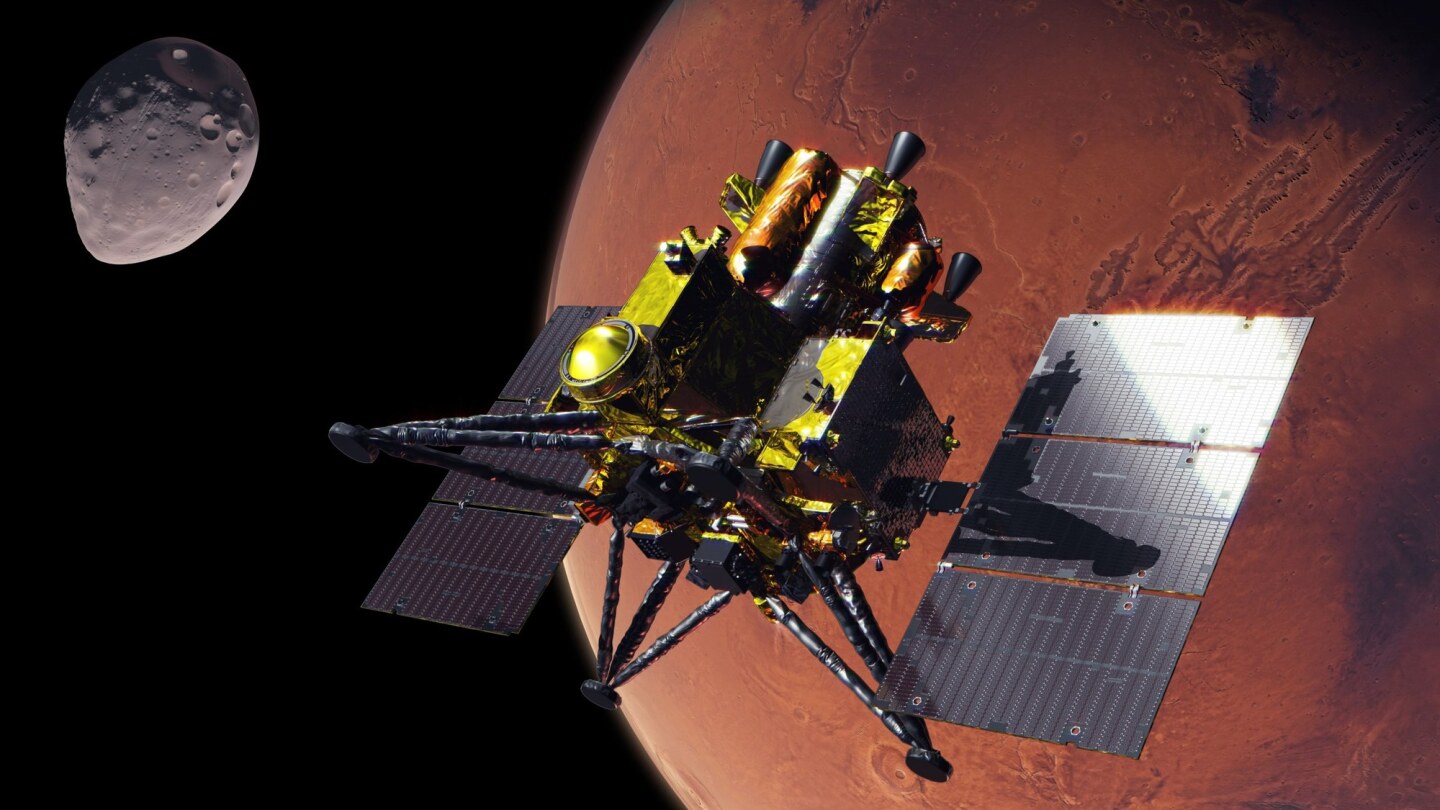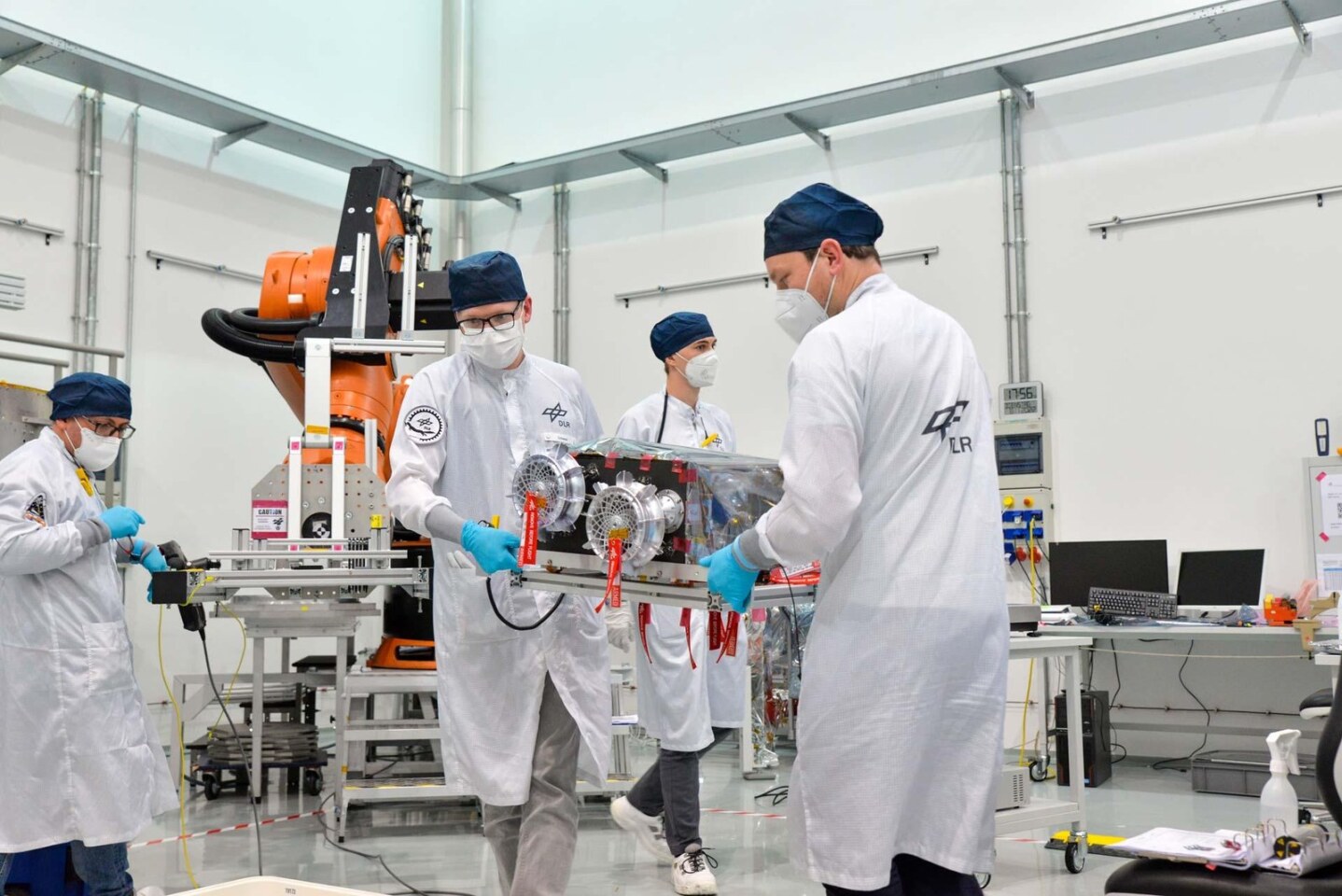At the Paris Air Show, the space agencies of France, Germany and Japan signed an agreement that will allow a robotic Franco-German rover aboard Japan's Martian Moon eXploration (MMX) mission and land it on the surface of the Martian moon Phobos.
Even though the Red Planet has been visited by a small armada of robotic probes over the course of half a century, none have managed to land on the Martian moons Phobos and Deimos. There have been several attempts to land on the inner moon Phobos, but these have been unsuccessful.
However, this was not due to lack of interest. Even though Phobos has a mean diameter of only 14 miles (22 km), it has long intrigued astronomers since its discovery in 1877. Exactly what the moon is has remained a mystery, resulting in some offbeat, yet serious theories. In the 1950s, the strange orbital parameters of Phobos as it circles Mars three times a day and its light density caused one scientist to claim that it was an artificial satellite built in the ancient past by some long-dead Martian race.

Today, there are two major theories about Phobos. One is that it's a conglomeration of debris left over from the formation of Mars or captured from passing asteroids. The other is that the moon was created by a massive body colliding with Mars in the early days of the solar system.
To find some answers, the Japanese space agency, JAXA, is launching its MMX mission next year when Mars is in its best position for a rendezvous. When it reaches the planet, MMX will make flybys of the outer moon Deimos and will go into orbit around Phobos. However, "orbit" isn't quite the right word. Phobos has only 1/1,000th the gravity of Earth and a spacecraft cannot go into a true orbit around it, so it will go into what is called a quasi-satellite orbit (QSO) that will allow it to maintain station with the moon.
While at Phobos, MMX will deploy the rover built by France's German Aerospace Center (Deutsches Zentrum für Luft- und Raumfahrt (DLR)) and the French space agency, Centre national d'études spatiales (CNES).

Now officially called IDEFIX after the French name of the feisty little dog in the Asterix comics, the rover weighs only 55 lb (25 kg) and looks like a small black box resting on four wheels that it uses to get around. This getting around won't be easy. Phobos's gravity is so low that a person could leap into orbit, so IDEFIX won't so much roll as bounce, which is minimized by its wheels that are designed to dig into the surface. In addition, IDEFIX will have the help of a bespoke autonomous system to navigate.
The mission of solar-powered IDEFIX will be to use a miniRAD radiometer and RAX spectrometer to study the thermal properties and mineral composition of Phobos. It will also use its cameras to scout for spots on the moon where MMX will make several landings in order to collect 10 g (0.35 oz) of samples with a robotic arm. The samples will be sent back to Earth in a special Return Module that will arrive in July 2029.
The rover is currently undergoing the final integration of its components, which is expected to be completed in a couple of months, before being delivered to Japan for linking to the MMX spacecraft using a special connector assembly.
"We are very excited to collaborate with CNES and DLR as part of the MMX mission, which endeavors to clarify the origin of the Martian moons and the evolutionary process of the Martian sphere by collecting samples from one of Mars' two moons – Phobos – for the first time in space history," said Hiroshi Yamakawa, President of JAXA. "Japan shares a precious memory with France and Germany regarding the collaboration during the Hayabusa2 sample return mission, on which the joint CNES-DLR MASCOT lander flew. And we are looking forward to putting our efforts together once again for a successful MMX mission."
Source: DLR









